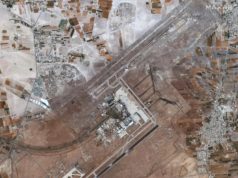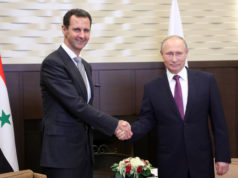Arab League Secretary General Nabil el-Araby arrived in New York on Monday, two days after the League suspended its mission to Syria due to “critical” conditions and rising violence in the country. El-Araby will deliver the mission’s findings to the UN Security Council on Tuesday, and later this week, the UNSC is expected to take up a draft resolution introduced by Morocco calling on Syrian President Bashar al-Asad to step down and transfer power to his vice president. Russia has already said it will veto the resolution to protect its ally.
Fighting around the capital of Damascus intensified over the weekend when the Syrian army launched an offensive into suburbs controlled by the rebel Free Syrian Army. According to reports, the rebel army made a tactical withdrawal and the regime’s forces took over the areas, killing at least 26. On Sunday, at least 60 were killed in fighting across the country. The fighting around Damascus continued into Monday.

Syrian protesters wave the country’s pre-Baath flag. |
Last week, the UN said it can no longer reliably keep track of the mounting death toll in Syria, which in December the UN put at more than 5,000. On January 10, UN Under Secretary General B. Lynn Pascoe said that at least 400 people had been killed since December 26, when the Arab League monitors arrived in the country.
The situation in Syria is dire. On Monday, Secretary General of the Organization of Islamic Cooperation, Ekmeleddin Ihsanoglu, called on the international community to take “all measures to end bloodshed in Syria,” except by using “foreign intervention.” But with Bashar al-Asad in power, the bloodshed will only end in one of two ways — with the opposition stepping down or with a strong foreign military intervention. Unless one of the two occurs, Asad can be expected to continue his murdering spree.





